Showing Spotlights 537 - 544 of 2880 in category All (newest first):
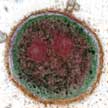 The physicochemical properties of nanoparticles alone cannot predict the fate of nanoparticles in biological systems. Current evidence suggests that the formation of a corona on the nanoparticle surface is the most important parameter that controls nanoparticle toxicity. Scientists now showed that protein corona modulates internalisation and cytotoxicity of nanodiamonds in non-phagocytic and phagocytic cells. Specifically, they found that corona made of bovine serum albumin (BSA), which represents the most abundant protein in blood plasma, reduced nanodiamond agglomeration.
The physicochemical properties of nanoparticles alone cannot predict the fate of nanoparticles in biological systems. Current evidence suggests that the formation of a corona on the nanoparticle surface is the most important parameter that controls nanoparticle toxicity. Scientists now showed that protein corona modulates internalisation and cytotoxicity of nanodiamonds in non-phagocytic and phagocytic cells. Specifically, they found that corona made of bovine serum albumin (BSA), which represents the most abundant protein in blood plasma, reduced nanodiamond agglomeration.
Sep 4th, 2020
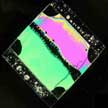 Many of the electronic devices we use in our everyday life employ liquid crystals in their optical displays. Electric field induced orientational transitions of elongated liquid crystal molecules are at the heart of LC technologies. Changing the applied voltage controls the orientation of liquid crystals and their properties such as color. Scientists now report an experimental observation of the electro-optical effect that is completely opposite to the conventional guest-host effect: ferroelectric nanoparticles being switched by an external field mediate the switching of liquid crystals.
Many of the electronic devices we use in our everyday life employ liquid crystals in their optical displays. Electric field induced orientational transitions of elongated liquid crystal molecules are at the heart of LC technologies. Changing the applied voltage controls the orientation of liquid crystals and their properties such as color. Scientists now report an experimental observation of the electro-optical effect that is completely opposite to the conventional guest-host effect: ferroelectric nanoparticles being switched by an external field mediate the switching of liquid crystals.
Aug 28th, 2020
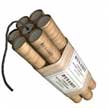 Explosive trace detection (ETD) is a challenging task. Various factors, such as wide variety of compounds that can be used as explosives, the vast number of deployment means, and the lack of inexpensive sensors providing both high sensitivity and selectivity, have made trace detection a complex and costly task. Whereas animals still remain a benchmark for emerging technologies with key attributes being high selectivity, sensitivity, concurrent detection of multiple analytes, and fast screening times, it is likely that nanomaterials will play an important role in the development of much improved future ETD technologies.
Explosive trace detection (ETD) is a challenging task. Various factors, such as wide variety of compounds that can be used as explosives, the vast number of deployment means, and the lack of inexpensive sensors providing both high sensitivity and selectivity, have made trace detection a complex and costly task. Whereas animals still remain a benchmark for emerging technologies with key attributes being high selectivity, sensitivity, concurrent detection of multiple analytes, and fast screening times, it is likely that nanomaterials will play an important role in the development of much improved future ETD technologies.
Aug 26th, 2020
 Understanding the alignment phenomena of a nematic liquid crystals on nanostructured surfaces remains an important area of research, as the alignment process determines the LC's molecular orientation and conformation - which influence the LC's optical and electro-optical characteristics in modern LCDs. Researchers report that an inorganic nanostructured surface - vertically aligned carbon nanotube arrays - can be employed as the alignment agent to design an electro-optic homeotropic LC device.
Understanding the alignment phenomena of a nematic liquid crystals on nanostructured surfaces remains an important area of research, as the alignment process determines the LC's molecular orientation and conformation - which influence the LC's optical and electro-optical characteristics in modern LCDs. Researchers report that an inorganic nanostructured surface - vertically aligned carbon nanotube arrays - can be employed as the alignment agent to design an electro-optic homeotropic LC device.
Aug 19th, 2020
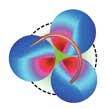 Researchers have exploited the opto-thermoelectric effect to develop a new type of all-optical microswimmers with active navigation functionality. These microswimmers consist of individual Janus particles - polystyrene beads half coated with gold nanoparticles - that can be directionally delivered over 22 times of their own diameters in 39 seconds. The opto-thermoelectric field triggers two working states - swimming and rotating - under different laser inputs. Combined with a feedback control algorithm to coordinate swimming and rotating states of the swimmers based on real-time imaging, precise all-optical navigation and target delivery becomes possible.
Researchers have exploited the opto-thermoelectric effect to develop a new type of all-optical microswimmers with active navigation functionality. These microswimmers consist of individual Janus particles - polystyrene beads half coated with gold nanoparticles - that can be directionally delivered over 22 times of their own diameters in 39 seconds. The opto-thermoelectric field triggers two working states - swimming and rotating - under different laser inputs. Combined with a feedback control algorithm to coordinate swimming and rotating states of the swimmers based on real-time imaging, precise all-optical navigation and target delivery becomes possible.
Aug 18th, 2020
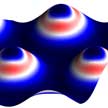 Periodically strained graphene harbors correlated electronic phases similar to those previously observed in magic angle twisted bilayer graphene. By precisely rotating two stacked sheets of graphene one can induce superconducting and insulating phases depending on the electric density. This behavior is extremely desirable because it significantly reduces energy losses in electronic devices making them more efficient and durable. Researchers have now proposed an alternative way to obtain similar phases. Their approach relies on periodically straining a graphene sheet rather than stacking layers on top of each other.
Periodically strained graphene harbors correlated electronic phases similar to those previously observed in magic angle twisted bilayer graphene. By precisely rotating two stacked sheets of graphene one can induce superconducting and insulating phases depending on the electric density. This behavior is extremely desirable because it significantly reduces energy losses in electronic devices making them more efficient and durable. Researchers have now proposed an alternative way to obtain similar phases. Their approach relies on periodically straining a graphene sheet rather than stacking layers on top of each other.
Aug 13th, 2020
 Researchers report an integrated multimodal flexible sensor system comprising a room humidity sensor, a leaf humidity sensor, an optical sensor, and a temperature sensor that can tap into potential physiological health issues of plants. Using stacked ZIS nanosheets as the kernel sensing media, the flexible sensor can not only perceive light illumination at a fast response, but also monitor the humidity with a perdurable steady performance. The researchers measured in real time three primary abiotic stresses - i.e. humidity, light and temperature - that govern the transpiration of plants are measured without signal cross-coupling effect.
Researchers report an integrated multimodal flexible sensor system comprising a room humidity sensor, a leaf humidity sensor, an optical sensor, and a temperature sensor that can tap into potential physiological health issues of plants. Using stacked ZIS nanosheets as the kernel sensing media, the flexible sensor can not only perceive light illumination at a fast response, but also monitor the humidity with a perdurable steady performance. The researchers measured in real time three primary abiotic stresses - i.e. humidity, light and temperature - that govern the transpiration of plants are measured without signal cross-coupling effect.
Aug 12th, 2020
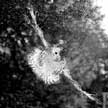 To birds, trees and sky reflected in glass appear to be habitat. They fly into windows at high speeds, and the loss of life is staggering. Unlike humans, most birds can see UV light. It therefore stands to reason that applying UV-reflecting coatings or patterns on windows and glass buildings can be particularly advantageous to prevent bird strikes. Tuning the UV reflectance properties of window glass (or any other surface for that matter) could result in higher UV reflectance that could be noticed by birds and potentially reduce bird-strike incidences, particularly in high-rise buildings and airplanes.
To birds, trees and sky reflected in glass appear to be habitat. They fly into windows at high speeds, and the loss of life is staggering. Unlike humans, most birds can see UV light. It therefore stands to reason that applying UV-reflecting coatings or patterns on windows and glass buildings can be particularly advantageous to prevent bird strikes. Tuning the UV reflectance properties of window glass (or any other surface for that matter) could result in higher UV reflectance that could be noticed by birds and potentially reduce bird-strike incidences, particularly in high-rise buildings and airplanes.
Aug 11th, 2020
 The physicochemical properties of nanoparticles alone cannot predict the fate of nanoparticles in biological systems. Current evidence suggests that the formation of a corona on the nanoparticle surface is the most important parameter that controls nanoparticle toxicity. Scientists now showed that protein corona modulates internalisation and cytotoxicity of nanodiamonds in non-phagocytic and phagocytic cells. Specifically, they found that corona made of bovine serum albumin (BSA), which represents the most abundant protein in blood plasma, reduced nanodiamond agglomeration.
The physicochemical properties of nanoparticles alone cannot predict the fate of nanoparticles in biological systems. Current evidence suggests that the formation of a corona on the nanoparticle surface is the most important parameter that controls nanoparticle toxicity. Scientists now showed that protein corona modulates internalisation and cytotoxicity of nanodiamonds in non-phagocytic and phagocytic cells. Specifically, they found that corona made of bovine serum albumin (BSA), which represents the most abundant protein in blood plasma, reduced nanodiamond agglomeration.
 Subscribe to our Nanotechnology Spotlight feed
Subscribe to our Nanotechnology Spotlight feed





